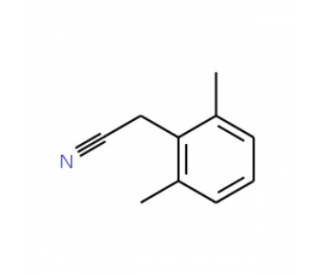详细说明
Purity
>95%, by SDS-PAGE under reducing conditions and visualized by silver stain
Endotoxin Level
<1.0 EU per 1 μg of the protein by the LAL method.
Activity
Measured by its ability to cleave the colorimetric peptide substrate Ac-Phe-Thiaphe-OH in the presence of 5,5’Dithio-bis (2-nitrobenzoic acid) (DTNB). Edwards, K.M. et al. (1999) J. Biol. Chem. 274:30468. The specific activity is >4,000 pmol/min/µg, as measured under the described conditions. See Activity Assay Protocol on www.RnDSystems.com
Source
Mouse myeloma cell line, NS0-derived Leu17-Tyr417, with a C-terminal 10-His tag
Accession #
N-terminal Sequence
AnalysisLeu17
Structure / Form
Pro form
Predicted Molecular Mass
46 kDa
SDS-PAGE
43 kDa, reducing conditions
2896-ZN |
| |
Formulation Lyophilized from a 0.2 μm filtered solution in Tris and NaCl. | ||
Reconstitution Reconstitute at 200 μg/mL in 25 mM Tris and 150 mM NaCl, pH 7.5. | ||
Shipping The product is shipped at ambient temperature. Upon receipt, store it immediately at the temperature recommended below. | ||
Stability & Storage: Use a manual defrost freezer and avoid repeated freeze-thaw cycles.
|
Assay Procedure
Materials
Assay Buffer: 50 mM Tris, 150 mM NaCl, 10 mM CaCl2, 0.05% (w/v) Brij-35, pH 7.5 (TCNB)
Recombinant Human Carboxypeptidase A2/CPA2 (rhCPA2) (Catalog # 2896-ZN)
Trypsin (Sigma, Catalog # T-1426)
Substrate: Ac-Phe-Thiaphe-OH (Peptides International, Catalog # STP-3621-PI),10 mM stock in DMSO
5,5’-dithio-bis(2-nitrobenzoic acid) (DTNB), (Sigma, Catalog # D-8130) 10 mM stock in DMSO
96 well clear plate (Costar, Catalog # 92592)
Plate Reader (Model: SpectraMax Plus by Molecular Devices) or equivalent
Dilute rhCPA2 to 100 µg/mL with 1.0 µg/mL Trypsin in Assay Buffer.
Incubate at room temperature for 60 minutes.
Dilute active rhCPA2 to 0.1 µg/mL in Assay Buffer.
Combine equal volumes of 10 mM Substrate and 10 mM DTNB. Then, dilute this mixture to 200 μM Substrate, 200 μM DTNB with Assay Buffer.
Load 50 µL of the 0.1 µg/mL rhCPA2 into microplate. Include a Substrate Blank with 50 µL of Assay Buffer in place of rhCPA2.
Start the reaction by adding 50 µL of 200 µM Substrate into wells.
Read in kinetic mode for 5 minutes at an absorbance of 405 nm.
Calculate specific activity using the following formula:
Specific Activity (pmol/min/µg) = | Adjusted Vmax* (OD/min) x well volume (L) x 1012 pmol/M |
| ext. coeff** (M-1cm-1) x path corr.*** (cm) x amount of enzyme (µg) |
*Adjusted for Substrate Blank
**Using the extinction coefficient 13260 M -1cm -1
***Using the path correction 0.32 cm
Note: the output of many spectrophotometers is in mOD Per Well:
rhCPA2: 0.005 µg
Substrate: 100 µM
DTNB: 100 µM
Background: Carboxypeptidase A2/CPA2
Carboxypeptidase A2 encoded by the CPA2 gene cleaves the C-terminal amide or ester bond of peptides that have a free C-terminal carboxyl group (1). It prefers the C-terminal residues with aromatic side chains including Phe, Tyr, and Trp. The deduced amino acid sequence of human CPA2 consists of a signal peptide (residues 1 to 16), a pro region (residues 17 to 112), and a mature chain (residues 113 to 417). The purified rhCPA2 corresponds to the pro form, which can be activated and assayed under the conditions described in the Activity Assay Protocol.
References:
Auld, D.S. (2004) in Handbook of Proteolytic Enzymes (ed. Barrett, et al.) p. 821, Academic Press, San Diego.
Entrez Gene IDs:
1358 (Human)
Alternate Names:
carboxypeptidase A2 (pancreatic); Carboxypeptidase A2; CPA2; EC 3.4.17; EC 3.4.17.15











 粤公网安备44196802000105号
粤公网安备44196802000105号